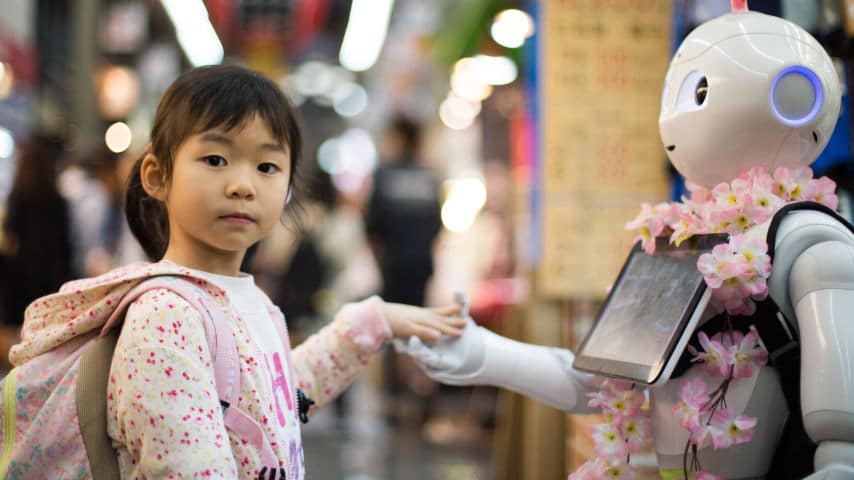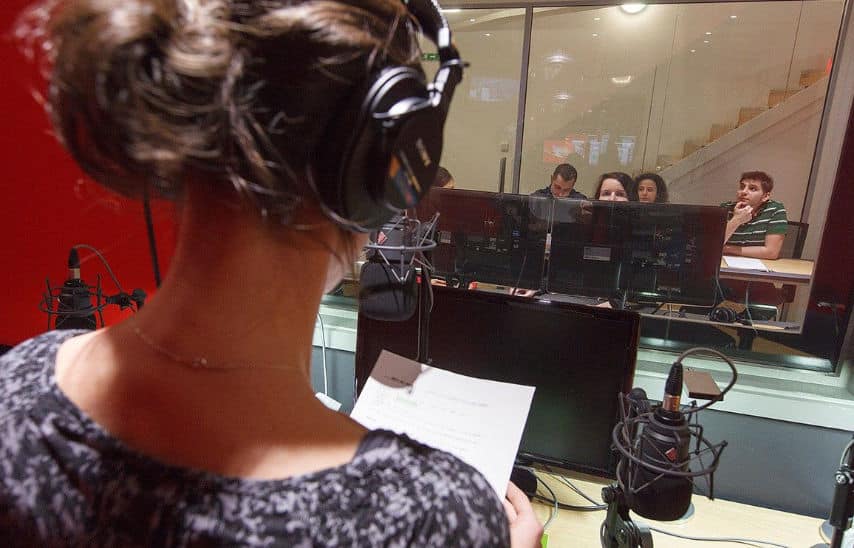Language is the thread that binds us all together, a tool that allows us to express ourselves, connect with others, and understand the world around us. But what happens when that thread breaks? What happens when language barriers prevent us from communicating effectively with those around us?
For centuries, language barriers have been a hindrance to human connection, leading to misunderstandings, missed opportunities, and even conflict. But now, a new breakthrough technology is on the horizon that has the potential to break down those barriers and transform the way we communicate. This technology is AI translation.
In this blog post, we’ll explore the rise of AI translation, its benefits, challenges, and future implications, and how it can revolutionize the way we connect with each other across languages and cultures.
Table of Contents
ToggleHow AI Translation is Breaking Down Language Barriers
AI translation is the use of artificial intelligence technology to translate text, audio or video content from one language to another. It’s a powerful tool that has the potential to revolutionize the way we communicate and break down the language barriers that have long stood in the way of effective communication.
AI translation has come a long way since its inception in the 1950s, when researchers first began to experiment with machine translation. Today, AI translation and voice overs are more sophisticated than ever before, with the ability to analyze vast amounts of data, process natural language, and produce accurate translations in real-time.
The Benefits of AI Translation
The rise of AI translation offers a wide range of benefits that can help individuals, businesses, and society as a whole. Here are just a few of the many benefits of this game-changing technology:
Faster and More Accurate Translation
One of the primary benefits of AI translation is its ability to provide faster and more accurate translations than traditional methods. With the ability to analyze vast amounts of data, AI translation can process and translate text in real-time, making it an ideal solution for businesses and individuals who need to communicate across language barriers quickly and efficiently.
Think of the possibilities. No more struggling to find the right words, no more awkward silences, no more missed opportunities. With AI translation, we can break down the barriers that have long stood in the way of effective communication, allowing us to connect with others across cultures and languages with ease and fluidity.
Cost-Effective
Another benefit of AI translation is that it’s more cost-effective than traditional translation methods. Traditional voice over translation services can be expensive, with rates varying depending on the language pair, the complexity of the text, and the urgency of the translation. AI translation, on the other hand, is based on a one-time investment in technology and can translate vast amounts of text at a fraction of the cost of traditional services.
This opens up a world of possibilities for businesses and individuals who may have previously been unable to afford traditional translation services. It allows them to expand their reach, communicate with a wider audience, and break down the barriers that have stood in the way of their success.
Consistent Quality
One of the most impressive aspects of AI translation is its ability to produce consistent quality translations regardless of the volume or complexity of the text. This is a game-changer for businesses and individuals who need to produce large volumes of content in multiple languages.
With AI translation, they can rest assured that their translations will be accurate and reliable, allowing them to focus on their core business and leave the language barriers to the machines.
Breaking Down Language Barriers
Perhaps the most significant benefit of AI translation is its ability to break down language barriers and promote global understanding. With the rise of AI translation, we have the power to connect with others across cultures and languages, promoting mutual understanding and respect.
AI translation has the potential to break down the linguistic barriers that have long stood in the way of effective communication, allowing us to connect with others from different backgrounds and cultures with ease and fluidity. We can communicate our ideas and thoughts, learn about different cultures, and broaden our understanding of the world around us.
This is especially important in today’s globalized world, where more and more businesses are operating on an international scale and individuals are connecting with people from all corners of the globe. AI translation can help us navigate the complexities of a multilingual and multicultural world, opening up opportunities for collaboration and innovation.
The Potential of AI Translation
AI translation has the potential to revolutionize the way we communicate, breaking down language barriers and fostering global understanding. However, we also recognize that there are still certain nuances and subtleties of language that only a human can comprehend. Without the unique abilities of humans to interpret language, AI translation would not be as powerful and effective as it could be.
At GoLocalise, we are constantly exploring new possibilities to improve our hybrid approach. The technology behind AI translation is constantly evolving, making it possible for us to break down language barriers and communicate more effectively than ever before.
The Challenges of AI Translation
While the benefits of AI translation are clear, there are also challenges to overcome. Here are a few of the challenges that must be addressed as we continue to develop this technology:
Contextual Understanding
While AI translation is incredibly powerful, it’s not without its challenges. One of the main challenges is contextual understanding. While AI translation can produce accurate translations of individual words and phrases, it may struggle to understand the context in which they are being used. This can lead to mistranslations or inaccuracies, particularly in more complex texts.
However, as technology continues to advance, we can expect AI translation to become even more sophisticated, offering a deeper understanding of language and context.
Cultural Nuances
Another challenge of AI translation is capturing cultural nuances and idiomatic expressions. These can be important for conveying tone, humor, or emotion in the text. This is particularly important in marketing and advertising, where language and tone are crucial for building brand awareness and establishing a connection with the target audience.
While AI translation may struggle to capture these nuances at first, as it continues to learn and evolve, we can expect it to become better at understanding the subtle differences that make each language unique.
Language Limitations of AI Translation
AI translation is currently limited to a finite number of languages and may not be able to translate more obscure or lesser-known languages. This can be a challenge for businesses and individuals who need to communicate in languages that are not widely spoken or written.
However, as the technology continues to advance and more data is fed into the machines, we can expect AI translation to expand to new languages and dialects, breaking down language barriers even further.
While AI translation has come a long way, there are still limitations to the technology. One of the biggest challenges is the fact that language is not static; it evolves and changes over time. Machines can struggle to keep up with these changes, which is why human involvement is so crucial.
Another limitation of AI translation is that it may not be able to capture the emotional nuances of language. Human translators are better equipped to understand the tone and emotion behind the text, and can ensure that the translation accurately conveys the intended sentiment.
The Importance of Human Involvement in AI Translation
With the rise of AI translation, there has been much debate about the role of humans in the translation process. Some have argued that machines will eventually replace human translators, while others believe that the human touch is essential to creating translations that truly resonate with their intended audience. At our GoLocalise, we believe in a hybrid approach to translation, where humans and machines work together to create the best possible translations. Machines and humans are not in competition with each other, but rather they complement each other, working together to achieve the best possible outcome.
Our translators use their cultural expertise and language skills to ensure that translations are not just accurate, but also convey the intended meaning and tone of the original text. They understand the nuances of language and can capture the subtle cultural references that machines may not be able to detect.
The Hybrid Approach to Translation
The hybrid approach to translation involves using both human expertise and technology to create ai-powered translations that are both accurate and engaging. Machines can provide a foundation, generating precise translations of individual words and phrases, but it’s the human touch that brings the text to life.
Our experienced human translators are skilled at understanding the nuances of language, capturing cultural nuances, and ensuring that the final translation is not only accurate but also effective. They use the output from the machines as a starting point, but then tweak and polish the final result to ensure that it is perfect for the intended audience.
The Future of AI Translation
As technology continues to evolve, we can expect to see even more advanced AI translation tools in the future. However, we believe that human involvement will always be necessary to ensure that translations are culturally appropriate, emotionally nuanced, and effective.
Here are a few of the future implications of this game-changing technology:
Greater Accuracy and Speed
As AI translation continues to improve, we can expect to see even greater accuracy and speed in translations. This will make it easier for businesses and individuals to communicate across languages and cultures, opening up new opportunities for collaboration and innovation.
Improved Contextual Understanding
As AI translation becomes more sophisticated, we can expect it to have a deeper understanding of language and context, reducing the risk of mistranslations and inaccuracies. This will make it easier for businesses to communicate with their target audiences and build strong, lasting relationships.
More Languages and Dialects
As the technology continues to advance and more data is fed into the machines, we can expect AI translation to expand to new languages and dialects, breaking down language barriers even further. This will make it easier for individuals and businesses to communicate with people from all corners of the globe, promoting mutual understanding and respect.
GoLocalise is committed to staying at the forefront of technology while also honoring the importance of the human touch. We believe that by combining the best of both worlds, we can create translations that are accurate, effective, and culturally appropriate.
Final Thoughts
At GoLocalise, we understand that while AI translation has incredible potential, it will never replace the human touch. While machines can offer accuracy and speed, there are certain nuances and subtleties of language that only a human can understand.
That’s why we believe in a hybrid approach, where humans and machines work together to create the best possible translations. Machines can provide the groundwork, producing accurate translations of individual words and phrases, but it’s the human touch that brings the text to life.
Our experienced human translators are skilled at understanding the nuances of language, capturing cultural nuances, and ensuring that the final translation is not only accurate but also engaging and effective. They use the output from the machines as a starting point, tweaking and polishing the final result to ensure that it is perfect for the intended audience.
We believe in the power of technology to transform the way we communicate, but we also recognize the importance of the human touch. We believe that a combination of technology and human expertise is the key to creating translations that are both accurate and engaging. So let us continue to explore the possibilities of AI translation, while never forgetting the importance of human involvement in the translation process. Together, humans and machines can break down language barriers, promote global understanding, and build a brighter, more connected world.
If you are in need of translation services, we invite you to partner with us. Our experienced translators understand the power of language and the importance of cultural competence. Contact us today to learn more about our translation and voice over services and how we can help you connect with your audience on a deeper level. Let’s work together to break down language barriers and promote global understanding.






















